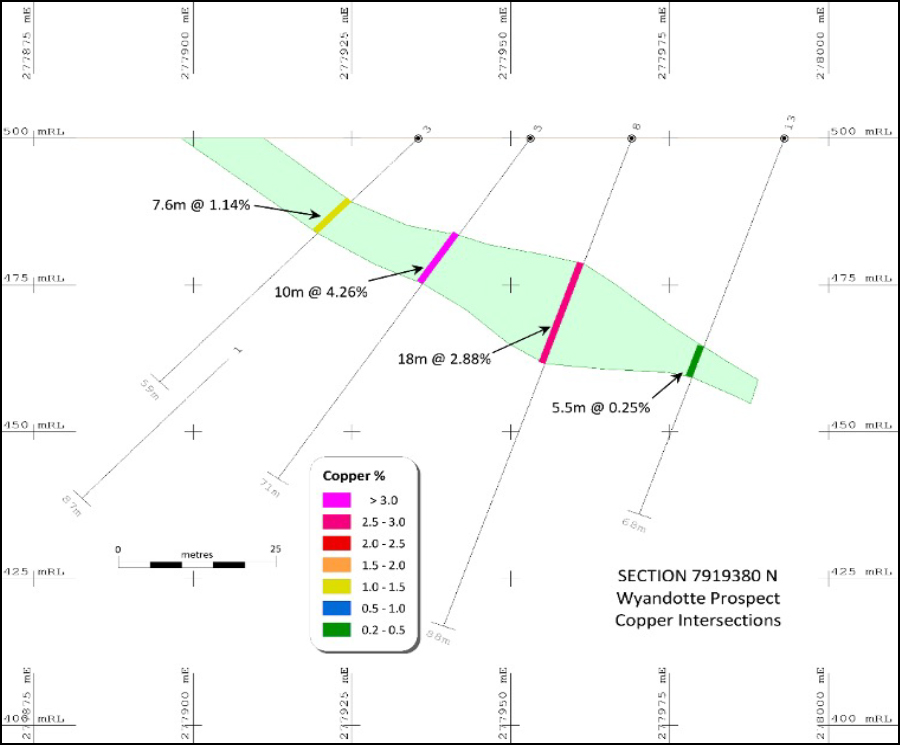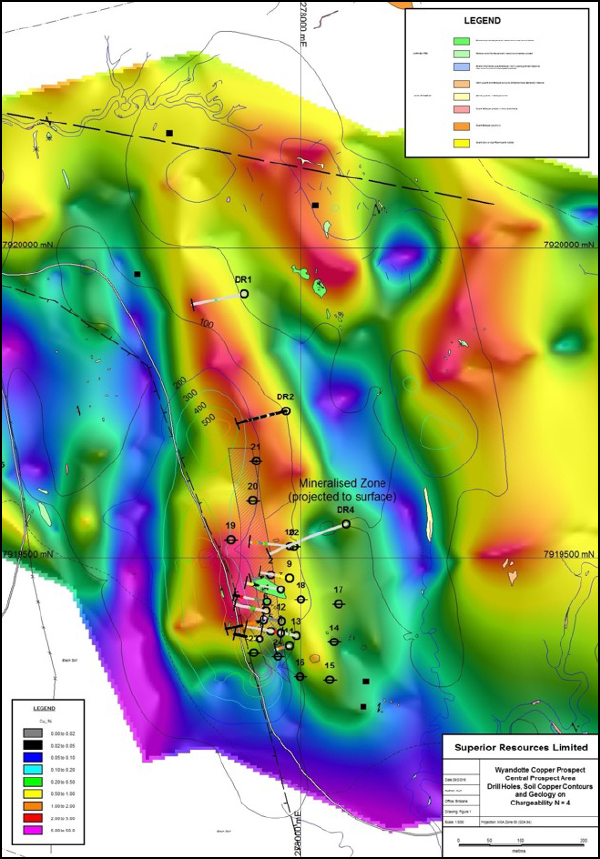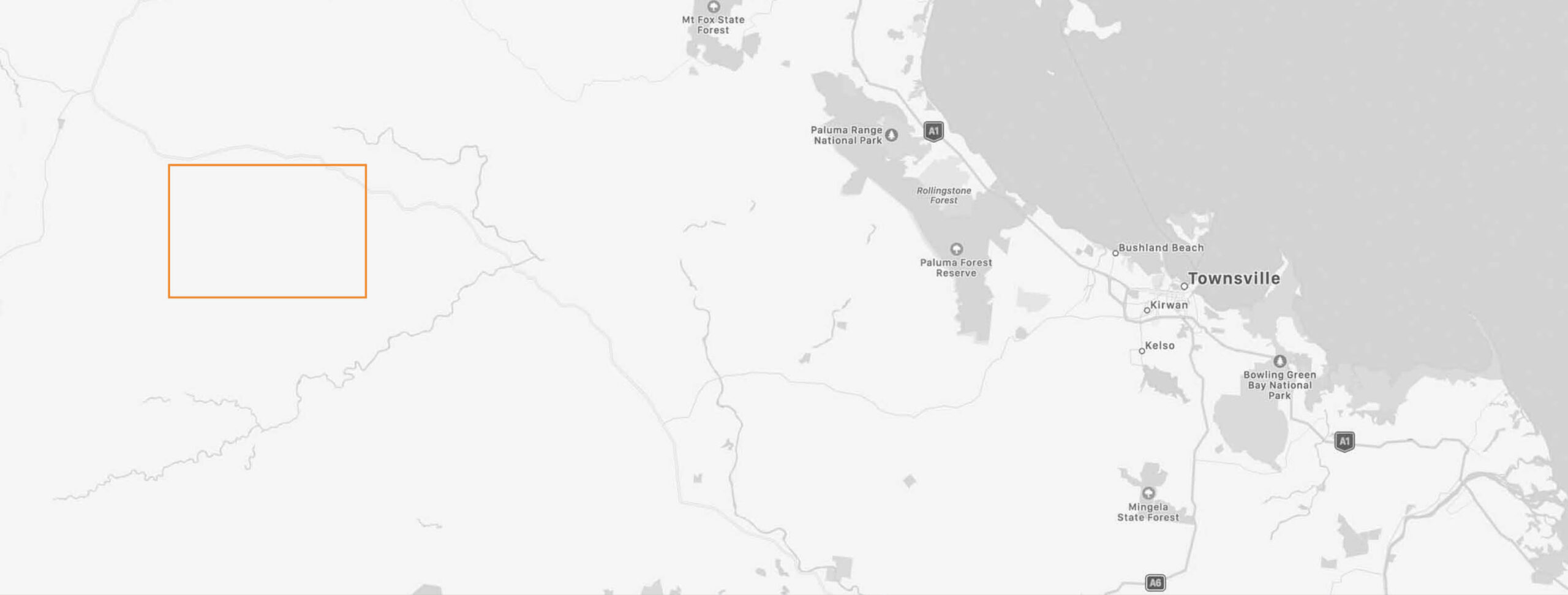In total, 32 historic diamond drill holes for 2,941 metres of drilling have been drilled into the deposit. The majority of the drilling (27 holes) was from a drilling program carried out by Silver Valley Minerals in 1969. Later drilling in 1975 (5 holes) was carried out by Shell Minerals and was concentrated along strike (2 holes), down dip (1 hole) and two other holes that were targeted on nearby zones.
Superior is planning to conduct resource definition drilling during 2021 in order to establish a maiden Mineral Resource followed by a Scoping Study to determine the prospects for developing an early stage mining and toll treatment operation. A program of work including geophysical surveying and drilling is being planned for the purpose of identifying a nearby larger source of mineralisation.
Copper mineralisation at Wyandotte is associated with epidote amphibolite. The country rocks to the epidote amphibolite include amphibolite, meta-intrusives and metasediments. The rocks were probably originally a sequence of sediments and basic volcanics which were intruded by rocks of approximately tonalite composition before being deformed and metamorphosed.
Petrological analysis work carried out for MIM Exploration in 2002 suggested that the Copper mineralisation may be intrusive (porphyry?) related but did not exclude that it could be of volcanogenic massive sulphide (VMS) origins. The primary copper mineralisation has probably been remobilised to its current position during deformation and metamorphism. The geology bears some resemblance to that at the Cockie Creek Copper Prospect.
The predominant copper mineral is chalcopyrite, but bornite (primary) is common. Both pyrite and magnetite often occur with the copper mineralisation. There is some supergene enrichment at about 20-25m depth.
3D visualisation of the mineralisation indicate a north-plunging copper body.


